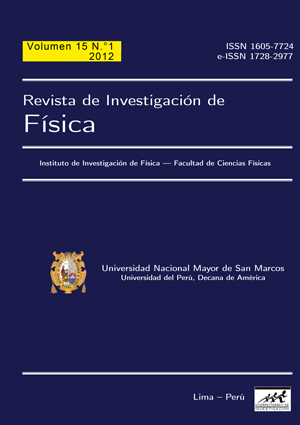Flux analysis and it’s influence on drops mean diameter for Y type internal mixture injectors
DOI:
https://doi.org/10.15381/rif.v15i01.8696Keywords:
Y type injector, drops mean diamter, Wigg equationAbstract
The Y type injectors are classified as internal mixture injectors and are very useful in industries.The calculation methods are based on the sonic flux conditions to enter to mixture chamber. Inthis work, we present a calculation method for these injectors in the subsonic regime where theoperation conditions such as the injector geometry, the pressure and temperature conditions,the properties and mass spend of gaseous and liquid fuel of atomization are known. Underthese conditions, an analysis of Wigg equation -which determine the drops mean diameter-,show that, in the critic regime only permit us to obtain the lesser spray drops mean diameter.For any other condition, the atomization gas flows under a subsonic regime and the drop meandiameter is greater that the minimum value. Also, we compare between different equationswhich define the drop mean diameter in differents variants of Wigg equations, propossed indifferent published woks, which obtain different results, this is due to a wrong interpretationof the physical essence of the Wigg equation.Downloads
Published
Issue
Section
License
Copyright (c) 2012 C. A. Quispe Gonzáles, W. E. Alvarado Torres, F. S. Costa, J. A. Carvalho Jr.

This work is licensed under a Creative Commons Attribution-NonCommercial-ShareAlike 4.0 International License.
THE AUTHORS RETAIN THEIR RIGHTS:
a. The authors retain their trademark and patent rights, as well as any process or procedure described in the article.
b. The authors retain the right to share, copy, distribute, perform and publicly communicate the article published in the Revista de Investigación de Física (for example, place it in an institutional repository or publish it in a book), with an acknowledgment of its initial publication in the Revista de Investigación de Física.
c. The authors retain the right to make a subsequent publication of their work, to use the article or any part of it (for example: a compilation of their works, notes for conferences, thesis, or for a book), provided that they indicate the source. of publication (authors of the work, journal, volume, number and date).














